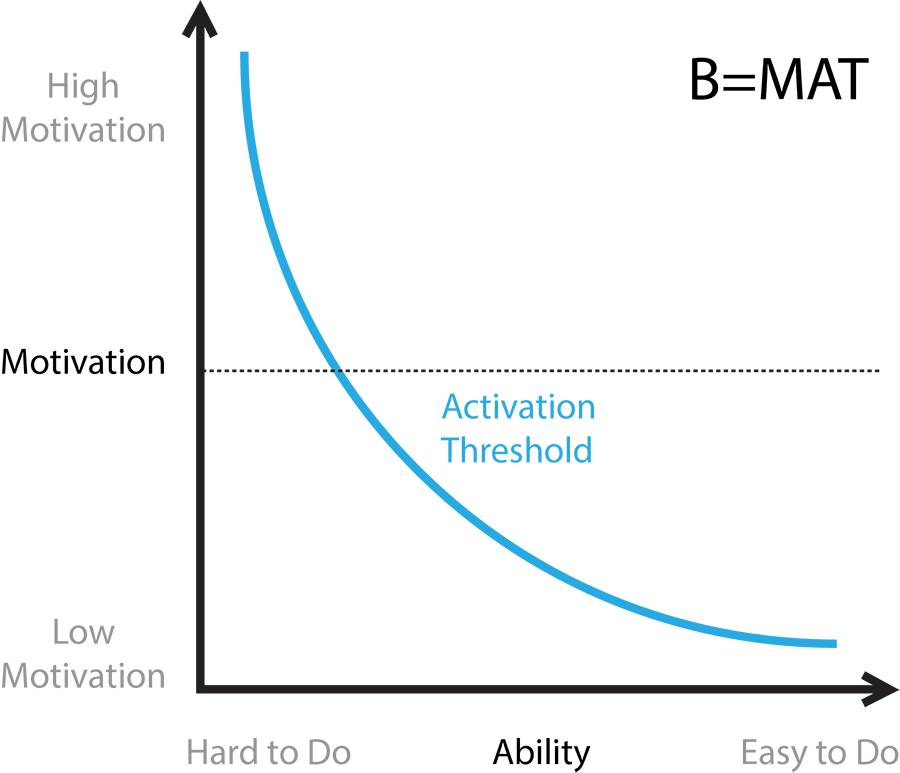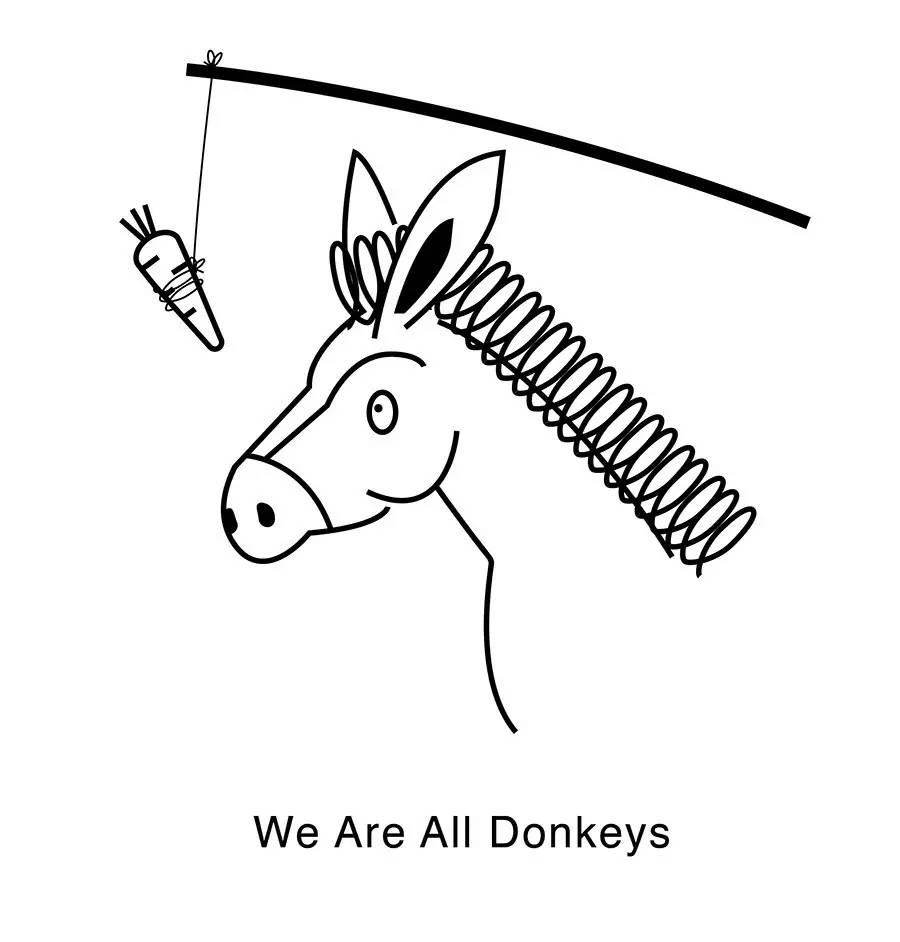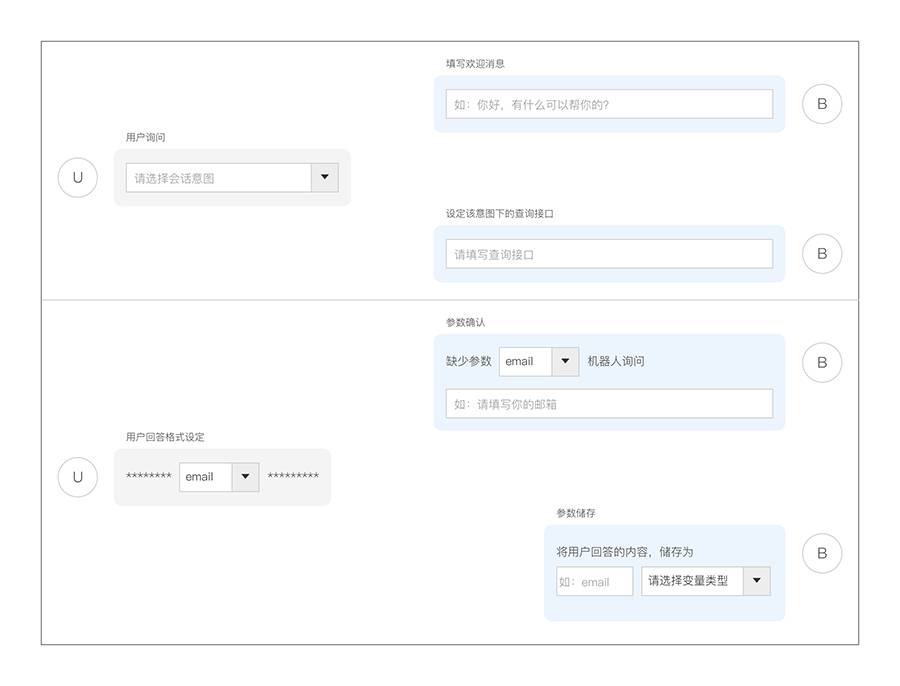The purpose of interaction design or product design is to change or influence user behavior by finding, choosing, and creating some routines. From this perspective, product design may be called “behavior design.”
1. Behavior designer
Since the birth of the concept of interaction in Internet products, human-computer interaction has undergone three changes:
- In the PC era, web interface is the main form of the product, and its core interaction mode is: “input mode = mouse and keyboard, output mode = interface”
- In the era of mobile Internet, web applications have come to the screens of mobile devices, and their core interaction methods are: “input mode = multi-touch, output mode = interface”
- In the coming era of artificial intelligence, applications are intelligent, and their core interaction methods are: “input mode = voice, output mode = voice + interface”
No matter how the times change, what has changed is the way of information input and output, and the way users act during input and output has changed, that is, “Before you could only sit in front of the computer and type on the keyboard, but now you can lie on the sofa and use speech. “. What remains unchanged is the cost of the user’s purpose and motivation.
In addition, some recently popular books, such as Robert Cialdini’s “Influence” and “Details”, and Richard H. Taylor’s “Boost”, they say that you can use some psychological skills, or even It is a zero-cost change to design something that can attract or guide the behavior of users.
If you understand this, you also understand that this is not what Internet product managers and interaction designers do? That is, within the allowable range (under different input and output restrictions), try to find, choose, and create some routines to influence user behavior, so that users can better experience their own goals and product goals, such as sharing, such as staying Wait longer. So from this perspective, I prefer to call interaction design, product design, and user experience design “behavior design.”
2. The process of user behavior
Behavioral design has always existed, but only now has an official name. The head of “behavioral design” is Professor BJFogg of Stanford University. The professor’s greatest contribution is to integrate behavioral design with software and Internet applications. Linked together, and set a model of user behavior: B=MAT

User-generated behavior requires the following three conditions:
- Willingness: This person must want to do it himself;
- Ability: The person must have the ability to do this, that is, the simpler it is, the better;
- Reminder: You need to remind this person to do this, and only if the first two points are met, the reminder is meaningful, otherwise it will become a harassment;
However, judging from the current Internet products:
- There is no lack of willingness, otherwise the product will not exist, even if there are a few, what is lacking is the method to strengthen the will or kidnap the willingness.
- It is not the lack of user capabilities, but the lack of capabilities of the product, and there is no way to make the product simple enough.
- There is no shortage of reminders. Regardless of the market, operations, product managers, etc., various methods (push notifications, advertisements, emails, text messages) are used to remind users. What is missing is more appropriate reminders and habit training.
Give an example of my own-install the baby’s stroller:
In terms of willingness, there is no doubt that the children’s family is the best reminder, and the actual installation process really tested my ability. First of all, the main structure of the car such as wheels, seats, frame, etc. are often seen in the community. Although I have never eaten pork, I have seen pigs run. Therefore, an attempt based on a relatively clear direction completed the installation of the main structure without consuming much effort. However, in the combination of some parts, such as adjusting the recliner as a seat and adjusting the tilt height, it took me a lot of effort. Finally, read the manual and consult customer service to get it done. This makes me question my ability. If there is no such strong will, I think I will permanently reject this matter psychologically.
3. The conjecture of behavioral design
At present, Taolu has developed into a doctrine of behavior design, and there is also a clear behavior model (B=MAT). As a practitioner, how can it be integrated into one’s own work? I sorted out some memories and made some bold conjectures.
1. Use routines to kidnap motives
a. Carrots in front of the donkey

I believe everyone has heard a story when they were young, “A carrot is hung in front of the donkey. In order to eat this carrot, the donkey has been trying to move forward and finally completed the transportation task.” There are also many current Internet product designs. A similar routine, luckily we all ate carrots in the end. For example, in e-commerce platforms, we often use tactics such as making up orders, full reduction, and free shipping to continuously strengthen our motivation to purchase, and most of us have followed suit.
Today, I am working on a translation proofreading tool. The project is probably: “After the machine is translated, the manual proofreading can help the translator improve the efficiency and reduce the cost of the demand side. We settle according to the number of proofreading (** yuan / thousand Words). As a tool, we hope that each reviewer can proofread as much content as possible to meet the needs of our customers. But as an individual, proofreaders will be physically tired and mentally exhausted, and for them to proofread today A certain amount is enough, so it is difficult to influence it to spend more time to complete more content. What if we give it a goal? After completing a few articles, calculate the income as 160 yuan, and then we set a goal in front of it , Give a reminder: such as “just another one, you can earn enough 200 yuan”, and prepare the content of the next one. I believe most people will follow suit. As for this 200 yuan Calculation is not important anymore, it is just a goal to strengthen motivation.

b. Priority attention
Priority attention processing refers to events that require changes in attention, and the perception channel will conduct priority awareness monitoring. For example, parents can hear a child’s cry in a noisy environment, but they don’t hear someone calling him next to him. The reason is the priority attention, which is the priority motivation of users to use the product.
Going back to translation and proofreading tools, the demand side’s priority attention to tools is efficiency and cost reduction, so we give priority to use when promoting the demand side to reduce the original cost by more than 60%. The first motivation of reviewers is easy to make money, so we give a clear notice on each content that needs to be reviewed: “You can make 45 yuan in about 30 minutes”, (time we can estimate, Money can be calculated accurately).

2. Reduce the cost of use, the simpler the better
The most direct way to reduce the cost of use is: “Try to keep the same as similar products, including the process, content elements, and operation methods as much as possible, so that you can inherit the experience of other products and reduce the cost of learning. However, this will only make the product It tends to be mediocre, loses the possibility of innovation, and does not meet the needs of new products. In fact, there are many channels for behavior inheritance.
a. Inherit the behavior in life
In life, when we want to talk to a person, we may have three behaviors: calling his name, approaching him, and touching him with our hands. What if these behaviors in life are added to the product design of smart hardware?
At present, we can already wake up the echo (a smart speaker from Amazon) through the wake word, or wake up using the physical button that wakes up, such as “echo, help me check the weather”. If we approach the echo, the echo can sense that we are coming towards it, and make some algorithmic judgments such as approaching in a straight line, a certain distance, and when we are close to it (a certain distance range), we can sense and give feedback: “can I help you “, or you can perceive and give feedback when you touch him, can it increase the intelligent side of artificial intelligence products? This way of behavior is transformed into an interactive way, and it is simple enough without learning, right?
b. Inherit the experience of other products
The inheritance here is to transform the use experience of one product and apply it to other types of products.
We often use chat tools such as WeChat, QQ, and customer service software. The two characters in the chat are arranged on the left and the right, so that we can adapt to the one-question-one-answer method, and this method can better distinguish you from me. The content of, of course, the sequential timeline and so on. This display method itself is the inheritance of behavior in life, but what if the user’s experience of using chat software is added to the design of the Chatbot?
At present, artificial intelligence natural language recognition and semantic understanding have reached a new level, and various corporate giants are also deploying some Chatbots to solve some similar consulting tasks. Customer service robots have become one of the landing directions, but due to industry differences, Chatbots need to be configured according to some businesses, so some Chatbot configurators have also emerged, such as motion.ai, chatfuel, and some domestic ones (not here. Enumerate); but from the perspective of the use threshold, user’s learning cost, and understanding cost, it is still a bit high (if you are interested, you can experience it yourself). But if you use chat to configure the Chatbot, will it reduce the user’s cost of use?

c. Difficulty and easy balance
Form design was a problem in the early Internet. Because the early Internet was mostly a B-side information platform, and the business was complicated, and there were many fields in the form. Such as registered user information, company information, organization information, etc. The more fields there are, the greater the user pressure will be. When the pressure reaches a certain level, the difficulty will increase exponentially. This is similar to quantitative and qualitative changes in perception. In order to reduce this pressure, designers often split it into multiple steps (conventional 3 steps), and clearly indicate required and non-required fields, or delete non-required fields and put them in subsequent supplements. The purpose is also to reduce the excessive pressure caused by a large amount of information at one time.
However, this split for the purpose of simplification has also been applied to the design of C-end products. The original content is divided into multiple steps, although the content of each step can be more focused, but the short line is drawn to the long line, which also increases the operation steps and operation difficulty, and reduces the operation efficiency. Therefore, in a similar thread design, balancing the length of the thread according to the strength of the motivation is also one of the ways to reduce the cost of use as much as possible. There is no need to split it blindly, nor to shorten it blindly.
3. The essence of reminding is conditioned reflex
No matter how the current Internet products remind users are: emails, phone calls, text messages, push notifications, etc., their essence is a kind of conditioned reflex. That is, ring the bell to stimulate saliva secretion.

Regarding conditioning, it is divided into classic conditioning (completed by Paplov through bells, bones, and dogs) and operational conditioning (completed by Skinner and Skinner box). Mail, phone calls, and text messages are among the simplest unconditional reflections, and they are also the cheapest and most direct, but they have also contributed to the biggest tragedy of the commons. Imagine the small red dot on the WeChat official account and the closed push notification. So blindly using this relatively simple reminder method is already a bit low-level.
a. Borrow existing conditioning
In fact, many unconditional reflexes have been formed in society for use. For example: I am a credit card user of China Merchants Bank and Bank of Communications. In about 13 years, China Merchants Bank launched a half-price event for food on Wednesdays. Every Wednesday I think of eating food. 14. In 2015, Bank of Communications launched the most red Friday (also a shopping discount activity), I will choose Friday to do some purchases.
This is a good conditional reflection. If the local service O2O platform uses China Merchants Bank data to sort out the stores participating in such activities on Wednesday and send it to potential users. Similarly, using Bank of Communications data to organize the merchants participating in the activities for users, I believe it will also establish a conditioned reflex between their products and users, and this conditioned reflex will be more advanced than any reminder.
b. Reverse use of conditioned reflex
The key to conditioning is “the way one thing affects another.” The early popularity of credit cards is also related to the reverse use of conditioned reflex. When you don’t have a credit card, the direct result of spending cash is that you have less cash in your hand. Although you have brought goods, it is still the pain of cash reduction. So spending money = goods + pain. The pain of the validity of the credit card account breaks out this behavior, causing the pain to occur 1 month later, that is, the money is now spent a month before paying it back. So spend money = commodity.
c. Create your own conditioned reflex
Going back to the translation tool, I should set a fixed time for the demand side to centrally distribute articles and content, and the supplier to collect the content, such as “9:00-10:00 in the morning, centrally distribute and collect content”. Improve task matching efficiency to meet the needs of both parties. And this 9:00-10:00 is also a kind of conditioned reflection that I want to create, that is, every time at this time, the reviewers will think of this platform and receive their own work. You can also add some operation methods based on operational conditioning. If you don’t receive it at this time, the number of articles you can receive at other times is limited, and the unit price is lower. In order to reversely strengthen the formation of conditioned reflex.
4. The conclusion
The current Internet has broken monopolies, resource restrictions, and administrative protection. Competition has reached a fierce stage. The separation of relatively fragmented positions such as product manager, interaction design, and user experience design can no longer meet the needs of the current Internet product market. We should systematically consider the birth and design of a product from a more comprehensive behavioral design perspective. We need to set goals to strengthen motivation, use daily experience and behavior to reduce usage costs, and regularly establish our own reminder mechanism.
As a designer, I am fortunate to be able to engage in such a job. Because behavior design brings together knowledge of many disciplines, it requires more detailed observation, introspection, empathy, and analogy; therefore, I am no longer limited to being an interaction designer. I don’t mind whether the work content exceeds the limits of my job responsibilities, and I do. Go beyond the limits of existing knowledge, but solve problems more comprehensively, boldly, openly, and freely.
At the same time, behavior design contains tremendous energy, which can influence the behavior of others. Such influence must have its advantages and disadvantages. So I am more cautious and awe.

